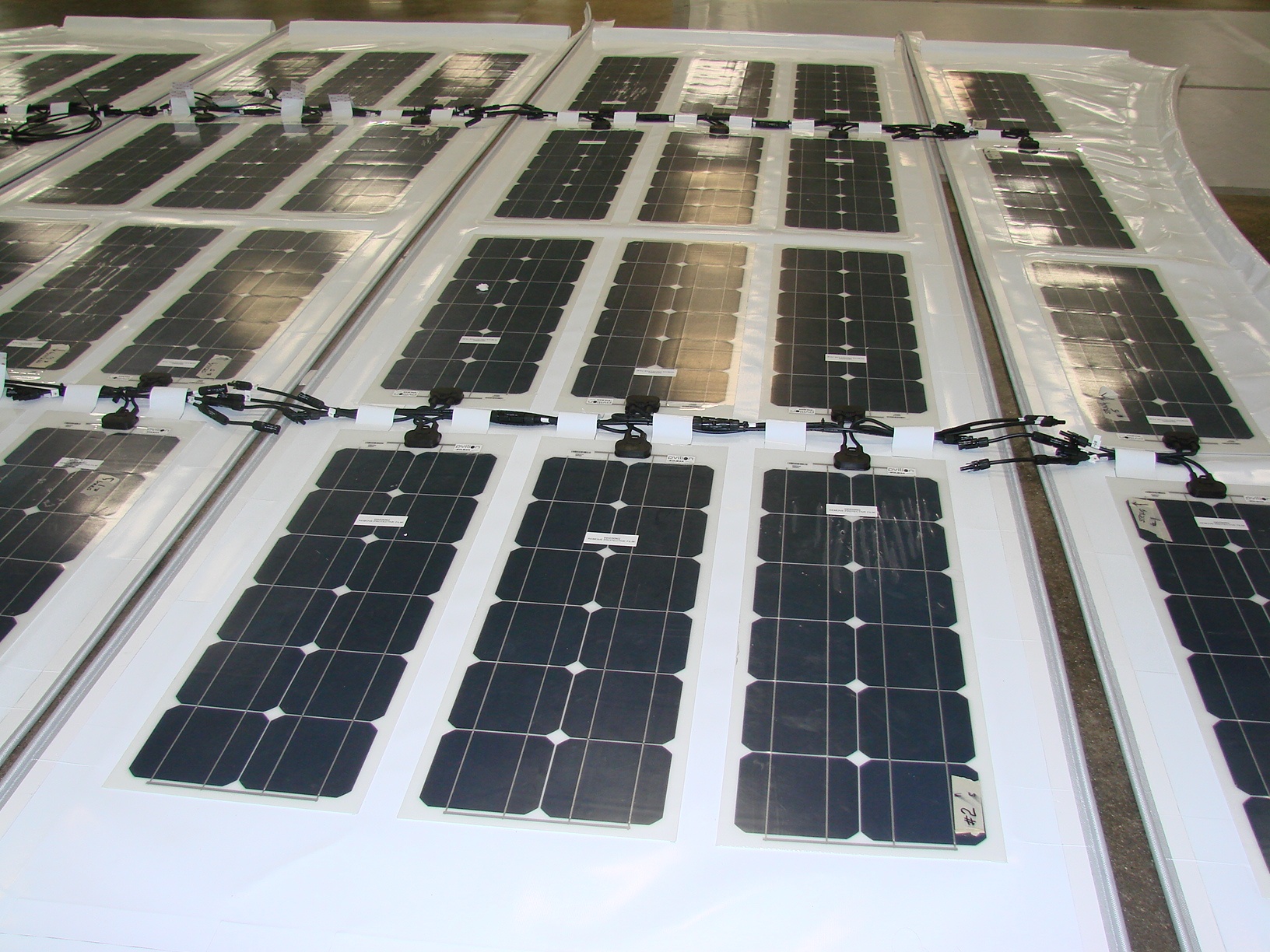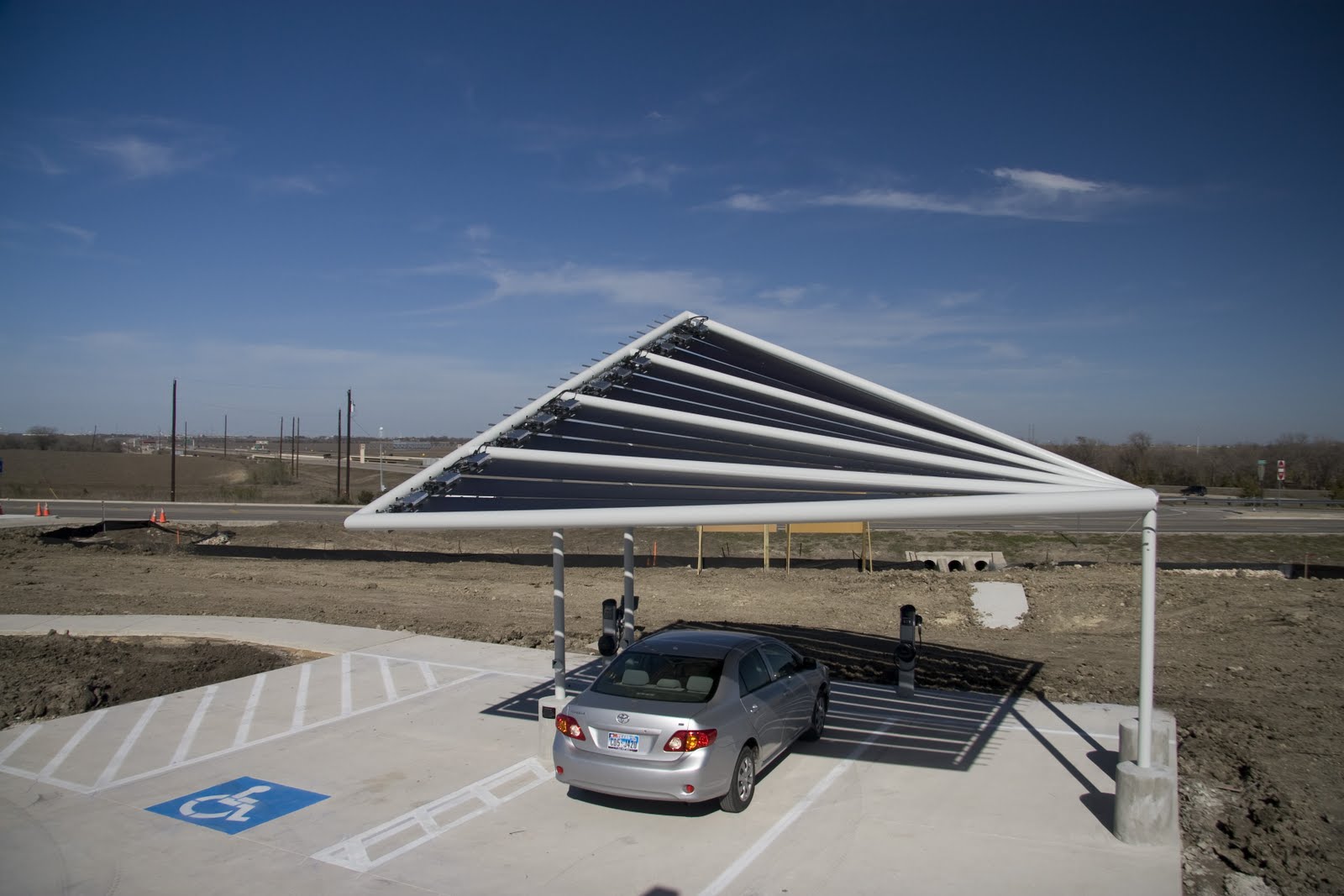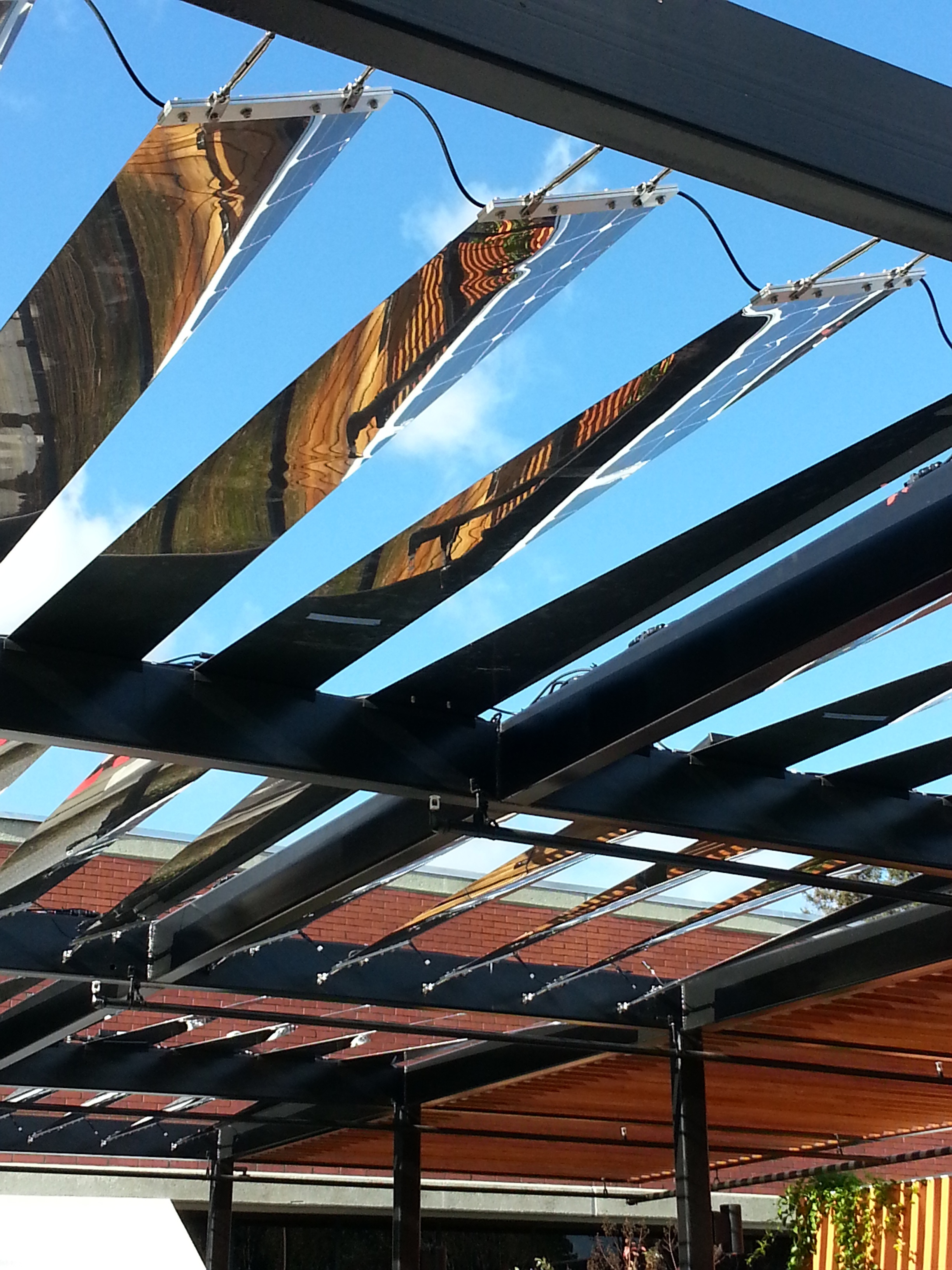Over the past few years, solar power has been growing exponentially. Some of the factors behind the surge in popularity has been the US Government Investment Tax Credit for Renewable Energy, as well as the Obama Administration’s pro-solar policies, and the increasing technological advances across a wide spectrum, which in turn has brought the costs down significantly enough to compete with mainstream energy sources like coal.
Just recently Tesla Energy announced a battery storage system for both residential and commercial applications. This is big news for the future of the solar power industry as there are feasible cost effective ways to store solar power generated electricity for those sunless days.
Research is being done across a myriad of interesting solar power solutions. My company, InSync Solar has teamed up with photovoltaic experts at the firm Pvilion. Pvilion designs and manufactures flexible photovoltaic solar structures and products, ranging from solar powered charging stations to solar powered curtains, building facades and clothing. Pvilion’s expertise is in the integration of all steps along the process. InSync Solar and Pvilion are developing the first exterior solar shade that not only reduces solar heat gain, but also generates electricity with a flexible photovoltaic shade cloth, or in other words – putting “solar” into solar shades. Below is my interview with Robert Lerner, one of the principles at Pvilion.
NG: What does Pvilion do?
RL: Pvilion is a design, engineering and manufacturing company, which specializes in integrating flexible photovoltaic into architectural projects and mass-produced products. We got a start about 20 years ago when we designed and manufactured the first photovoltaic tent. Since then, we’ve developed the first military shelters that had solar panels integrated into the skins, and we’ve designed and installed custom architecture solar structures for some very notable landmark projects. We work on projects at large and small scales, from designing solar jackets for Tommy Hilfiger, to fabricating major buildings as part of a team of architects, engineers, and manufacturers.
How did Pvilion get started?
Pvilion is a third generation company that has its origins in the late 1970s. Todd Dalland founded FTL Design Engineering, a design-engineering firm that specialized in lightweight membrane structures. After changing the world of tensile structure architecture, Todd Dalland and I spun off a new company called FTL Solar in 2005. FTL Solar sought to commercialize the research and development into solar technology integration with a proprietary set of products, mainly targeting the military market.
In 2011, Todd Dalland, Colin Touhey and I founded Pvilion as an independent spin off from FTL Solar to focus on architectural and commercial product lines, also utilizing the base technology of flexible photovoltaic and lightweight building materials. Some notable projects came about rather soon: The Solar Sail in Pflugerville, TX utilized flexible photovoltaic on thin sheets of twisted stainless steel. This patent-pending technology has since been used on another product we call the Solar Trellis. Pvilion now has architectural projects in development worldwide, and is working with InSync Solar to develop operable PV Shading Systems for the exterior of buildings. 
How does Pvilion envision the PV industry in the next 5 years?
We see further adoption of PV technology as an alternative energy source. We also see increasing globalization of the module and cell industries. However, we see more opportunity for manufacturing to come back to the United States. For example, we recently completed some projects in which the cells were manufactured in Taiwan, they were turned into modules in Europe, then shipped to us in Brooklyn, where we converted them to finished products, and then shipped them out to customers in California, or even Europe. Of course, this is unique for the solar industry at large, but we may see more of this happening as the appetite for more interesting solar projects increases. It used to be that solar was thought of categorically in terms of “how can I install the greatest number of panels, at the lowest cost to give me the quickest return on investment.” Now PV is poised to become another architectural piece of a building that is thought of in terms of esthetics, functionality, and return on investment.
What is your vision of incorporating Exterior Shades and Photovoltaic?
The beauty of the exterior solar shade photovoltaic system is that it combines active and passive benefits of shading and power generation. Shading reduces the cooling load on the building while reducing glare and increasing comfort. Exterior shades offer large surface areas, which can also be generating photovoltaic energy. These large surface areas on the elevations of the buildings are a significant untapped solar resource. Our vision is to make these operable photovoltaic shades a beautiful architectural enhancement to the facade. Facades of buildings will be more dynamic, changing with the weather and the time of day. Solar panels will be produced with color choices, so they won’t all look alike. 
What are the advantages of a Photovoltaic-Exterior Shade over panels installed on the roof?
Very often the roof of a building is encumbered by mechanical equipment which uses up valuable real estate and which would also shade a photovoltaic array. Additionally, roof top installations sometimes require roof penetrations, or ballasts that are heavy. We see the photovoltaic-exterior shade system as something that might be done in addition to a roof top installation or in lieu of a roof top installation. The main advantage, however, is that the photovoltaic exterior shade system performs two functions at once. It reduces cooling load, and provides power. Once a customer decides to install operable shades, the marginal cost increase of adding solar to the shade will be worth it, since there wouldn’t be any additional structural costs.
Conclusion:
Window coverings, and in particular exterior shading solutions have evolved into an important sustainable building system. Exterior shades and blinds reduce solar heat gain by over 85% and soon will produce renewable energy. We are about to put “solar” into solar shades.
{{cta(‘7fc41619-393a-44f3-bfac-65f105d8a90e’)}}
